There is so much dang thought that goes into a wedding, and of course the subsequent marriage. There should also be lots of intention put into both of those things, but that doesn’t mean you’re obligated to uphold every single thing in the book just because that’s how it’s always been done. It’s important to listen to yourself, talk with your partner, and decide on things that make sense to both of you — even if not to anyone else. To get you started on some food for thought, here are four wedding party traditions you might want to reconsider!
Editor’s note: I wanted to point out at the top here that I expressly and purposefully use the term ‘wedding party’ throughout this post. Many people refer to this as a ‘bridal party’ but I think that can be a harmful heteronormative term. (This bride-first language also perpetuates the notion that a wedding day is “the bride’s day” and she’s the most important person. Nope. Around here we believe a wedding day belongs to both partners!)
First of all, *in* a heterosexual wedding when you use ‘bridal party’ to describe the couple and both sides of their party together, it completely excludes the groom — he does not identify as a bride, so thus, using the term “bridal party” to include him and any groomsmen is exclusionary.
Second, for couples that identify as non-binary this term doesn’t reflect them accurately in the same way as the first example: they do not identify with being a bride. Thus, using a gender neutral term like ‘wedding party’ is ideal. It’s also the way to go if each side of the wedding party is co-ed and not traditionally all female or all male. You can’t use the term ‘bridesmaids’ (or even ‘bridal party’) if there are people included who do not identify as female. Likewise, you can’t use the term ‘groomsmen’ if there are people included who do not identify as male. Instead, you can refer to these separate groups as “[NAME]’s wedding party” or “[NAME]’s half of the wedding party.” Moving to inclusive language in this area is so simple and impactful, so please make a conscious choice to do so in your own life!
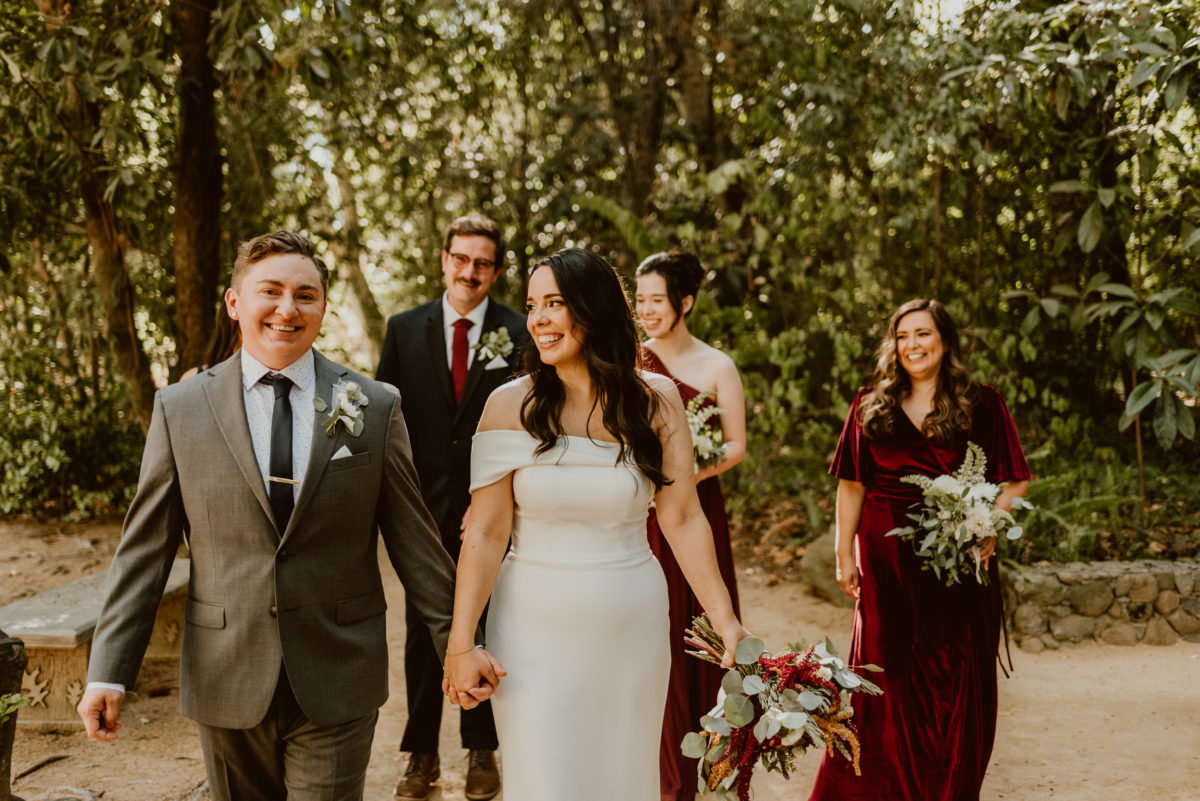
While we’re on the topic of bucking tradition, here’s a post about proposal traditions to reconsider!
Okay so there’s a few things you can consider in this area. Traditionally, there is an even number of people in each party, they all wear the exact same outfit, and they all stand up next to the couple during the ceremony. Sidebar, but have you ever Googled where this tradition came from? Originally, having bridesmaids standing next to the bride in very similar/identical outfits was to confuse evil spirits about which woman the bride was so she couldn’t be whisked away by the devil. Seriously — google that shit. (or I can just do it for you 😉)
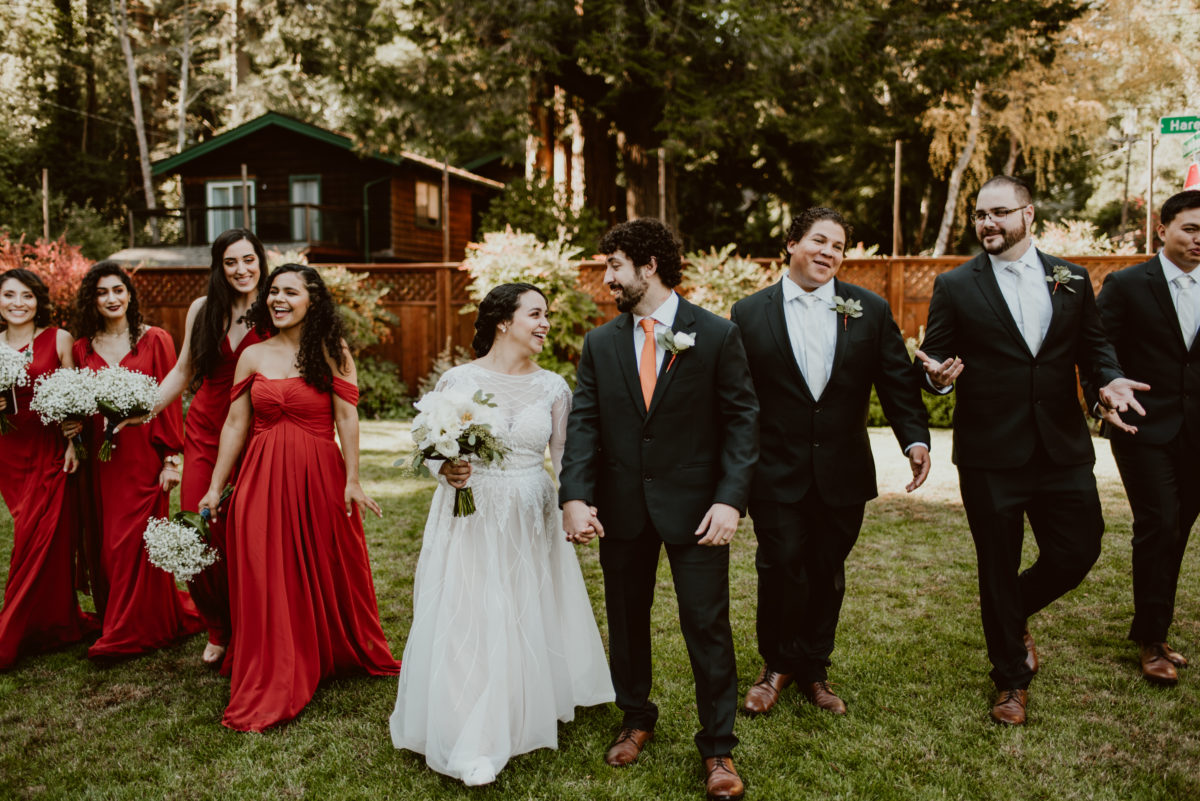
1. The number of people in each partner’s party
You are more than welcome to have an even number of people in each party if that’s what suits your fancy. If you’ve been dreaming about having perfectly symmetrical photos with an equal number of hype squad members on each side of you during your portraits, absolutely go for it. And if you want to take it a step further and decide with your partner that you want to have the same number of people in each partner’s party, go for it. But if you’re stressing out trying to figure out how to downsize your 5 BFFs to match your fiancé(e)’s 3 person wedding party — girllll, you have so much bigger fish to fry. Let that go and do your thing. Have all your fave people in your party.
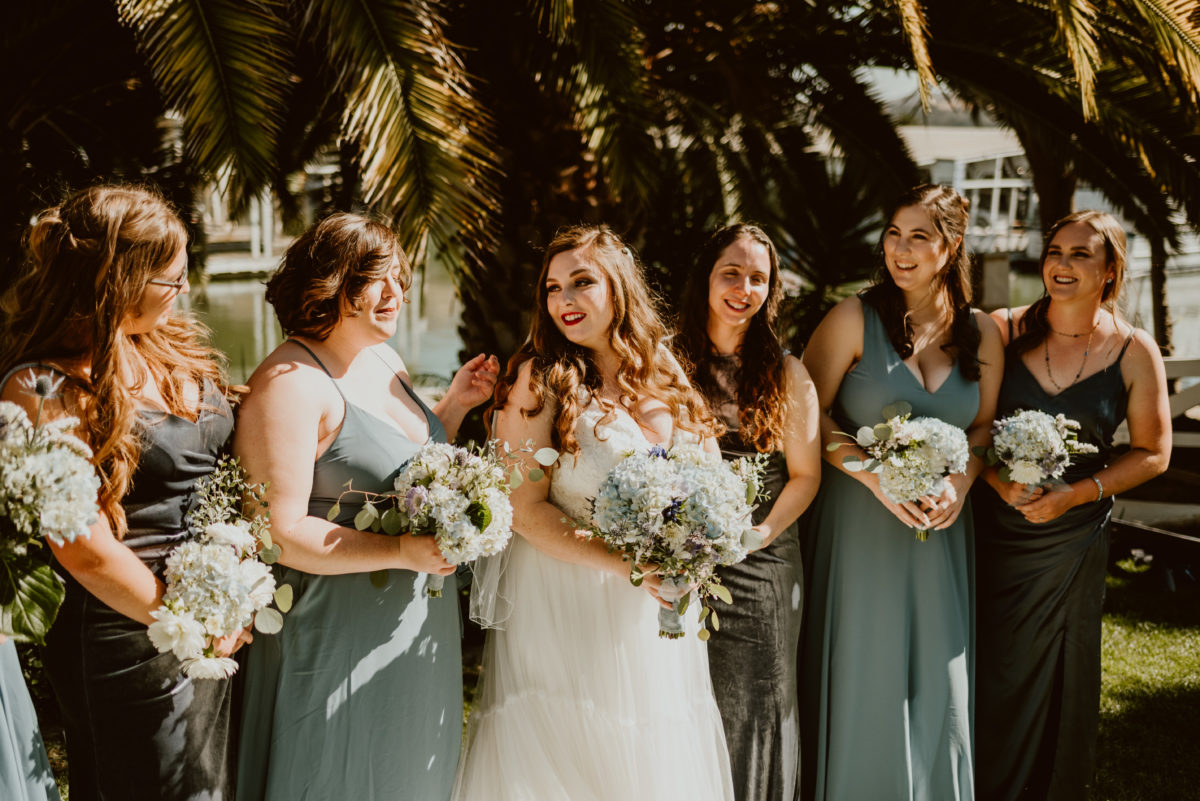
2. The attire they wear
Again, traditionally, each wedding party wears identical outfits. But more and more that’s been changing and I dig it so much! Often, a couple will stick to one color for their party to wear, but let each person choose the style of the outfit (more often for women and their dresses). But you don’t even have to stop there! It can be so gorgeous looking if each person is wearing a different color, but they all complement each other. Think: beige, rust, maroon, and mustard together. They don’t match, but they complement. Your only limit is your imagination here! Same goes for men. It’s more common for them to all match, but again — you do you. I’ve seen many weddings where the groomsmen are wearing different styles of suits from the groom, and sometimes from each other. At one of my recent fave weddings, the groom wore a full 3 piece suit, whereas the groomsmen only wore a shirt and suspenders. Don’t feel the need to match everything!
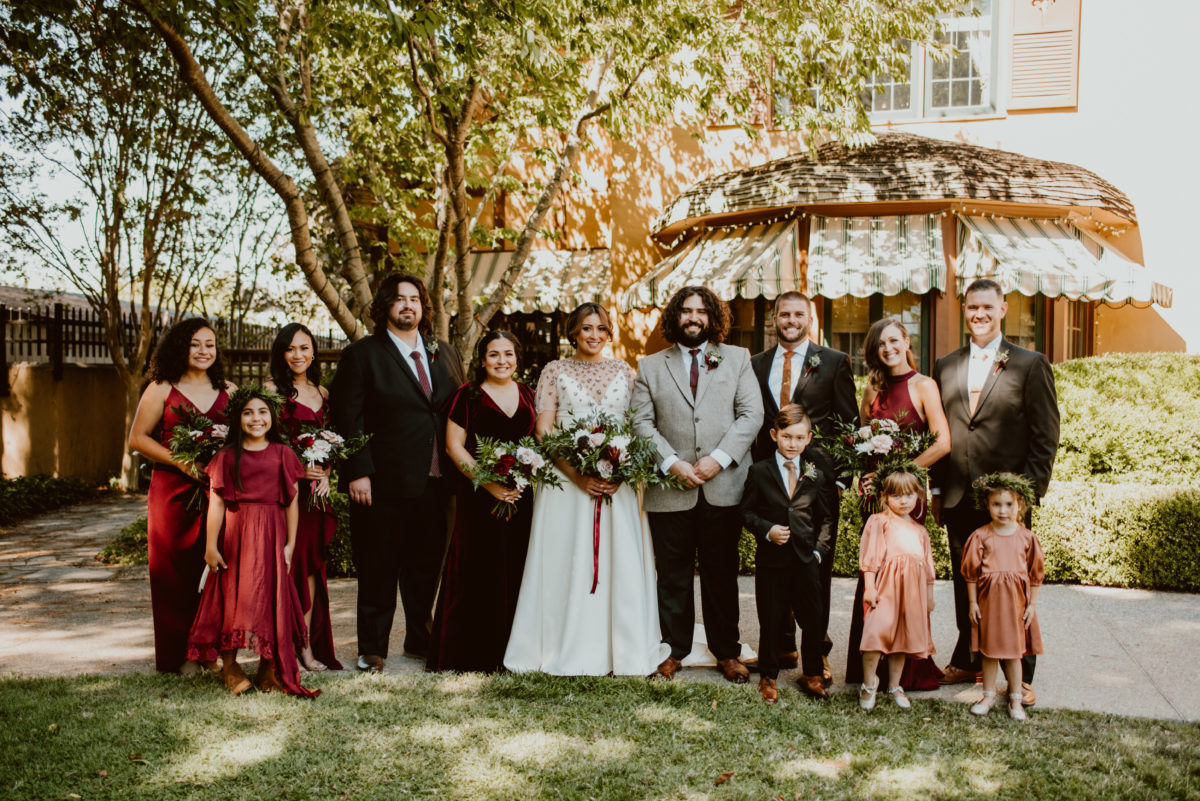
3. Whether they stand up with you
I’ve seen a few variations on this tradition. Of course, I’ve been to weddings that do have the full wedding party stand up at the alter with the couple, but I’ve also seen other versions. At one wedding, none of the wedding party stood at the alter; at another wedding, only two members of each party stood up alongside the couple (out of 8 bridesmaids and 14 groomsmen). I personally love the idea of having the entire party seated for the ceremony; having been a maid of honor and standing next to the couple during their wedding, while being there was a complete honor, I would so much rather have been able to view their ceremony from the front row. Not to mention if I’d been standing four or five people away from them in the line of bridesmaids! You don’t get much of a view back there.
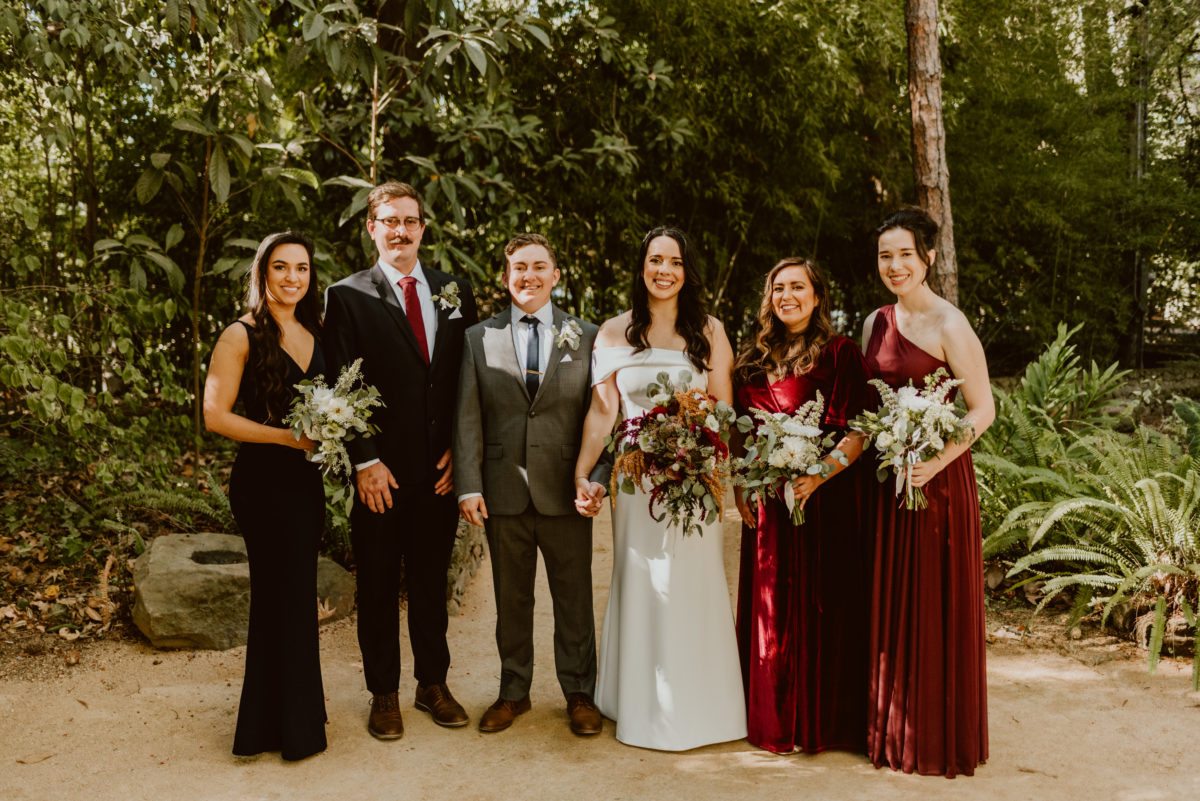
4. The genders in each party
Don’t feel like you need to stick to a wedding party that matches your gender! More and more I’m seeing coed wedding parties and it’s so awesome. Here’s my rule of thumb: if they’re your BFF/ride or die fam, they should be in your party no matter what gender they are. So if you’re a woman, feel free to throw your brother or male BFF into the mix. Same goes for the opposite as a man. And along that note — if anyone in your tribe identifies as LGBTQ and doesn’t want to adhere to the traditional clothing rules in each party, 1000% go for it! I’m a broken record by now, but let all the matchy-matchyness go if it doesn’t make sense for you and your peeps.
So there you go, the four wedding party traditions I think you should reconsider for your wedding! What did you think? Do you have anything to add to this list? Leave a comment below to let me know!